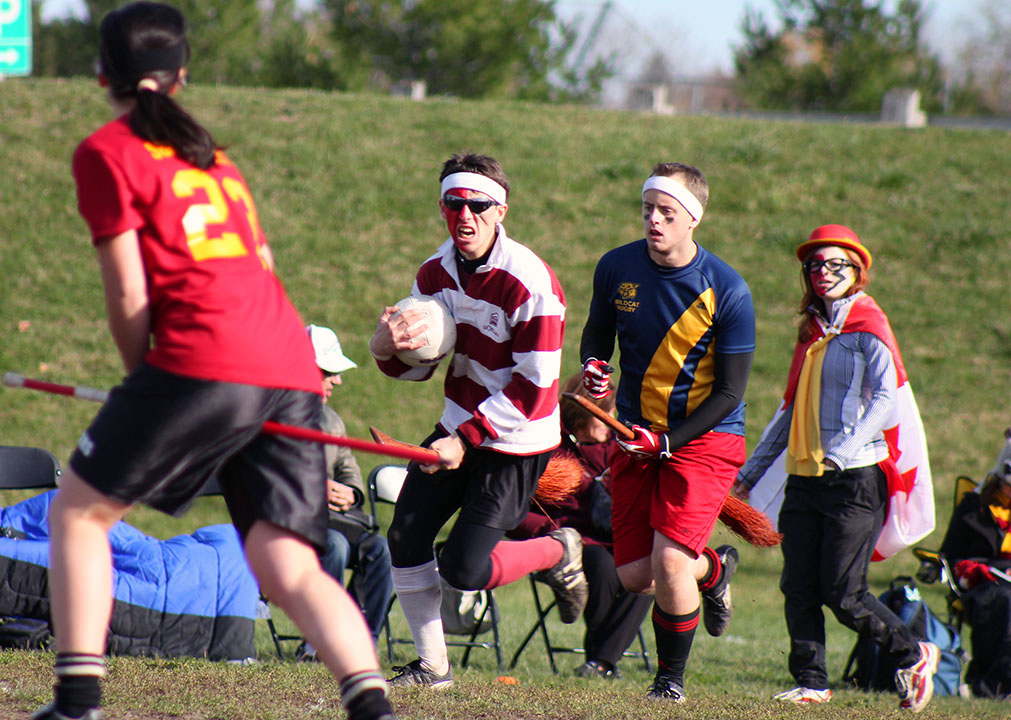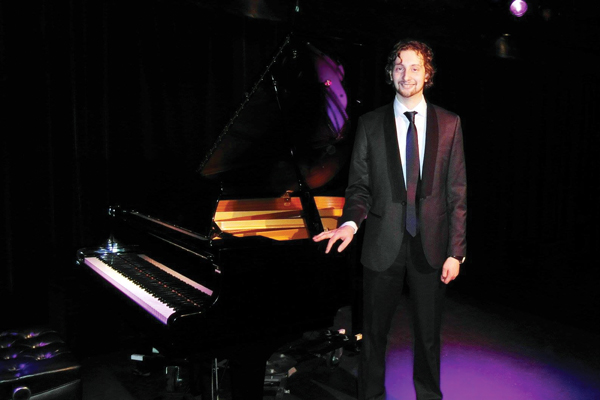A brief history of the Ottawa squad

BLUDGERS, QUAFFLES, BROOMSTICKS—oh my! While quidditch as played by Muggles around the world lacks flight and is free of any dubious hexes and jinxes, the sport—and its growing popularity on campuses across Canada—is nothing short of magical.
Quidditch is based on the game of the same name in J.K. Rowling’s Harry Potter series, first adapted from the books by students at Middlebury College in Vermont in 2005. Since then, the sport has evolved from one played recreationally by a handful of students in the United States to a highly competitive sport regulated by the International Quidditch Association (IQA).
The IQA boasts 300 teams from over 13 countries, primarily Canada and the United States, who play with hopes of making it to the annual Quidditch World Cup. This year, the competition will host 100 teams and 2,000 athletes in New York this November—including the University of Ottawa’s newly formed squad.
The U of O’s quidditch team got their start last fall when Andrea Hill, captain of Carleton’s quidditch team, challenged the school to start their own team. Tegan Bridge, team co-founder along with team president Deirdre Walters, says the U of O quidditch team owes a lot to its Carleton counterparts.
“[Our first practice] was hosted by Carleton’s team and they explained all of the rules and helped us get on our feet,” said Bridge. “They let us practice with them all through the winter until the end of the semester. Carleton’s team did so much for us—we really owe them a lot for helping us get this off the ground.”
One year later, the U of O has a full executive that governs a 19-player competitive team. Bridge says the team has come a long way from its humble beginnings.
“It was pretty difficult to get people to take us seriously at first,” she recalled. “We were tabling in the Unicentre, trying to get people interested, and I said to Deirdre, ‘We keep getting weird looks from people.’ And she replied, ‘Of course we’re getting weird looks—we’re trying to start a quidditch team.’”
Players of the sport would agree quidditch requires a certain level of athletic skill—not just a love of Harry and the gang.
“It takes agility, endurance, teamwork, and a certain flair for footwork,” explained Bridge. “Quidditch players, especially members of the University of Ottawa’s team, are also excellent dancers.”
The U of O team practices about 10 hours per week, working on position-specific drills and also those related to ball handling, endurance, and speed—skills that all players require. For a game that can be described as an interesting combination of dodgeball, rugby, and hide-and-seek, training sessions for the team are intense.
“Spectators unfamiliar with the game are generally surprised at how demanding it is,” said Bridge. “Our team practices a lot. We’ve been in training for the Canadian and Quidditch World Cups lately and, given how new our team is, we have a lot of catching up to do. That’s reflected in the amount we practice.”
Spectators might also be surprised to learn the young team trains year round—through rain, cold, and even snow.
“We’re a tough group and we’re Canadian—a little snow won’t hurt us,” said Bridge. “Practice was only cancelled for weather once last year when it was lower than -30 C.”
So what’s next for this tough squad of Muggles? Currently, the team is preparing for the Quidditch World Cup after securing their place in the tournament this past weekend. Bridge is especially excited for her team’s performance in two weeks.
“It’s a big deal for me personally, because as of the weekend of the Quidditch World Cup, it will have been exactly a year since I started trying to create a team,” she said. “I honestly had no idea if it was going to work and I’m so excited to see that all of the work we’ve put into this has been worth it.”
After the World Cup, the U of O quidditch team will be recruiting for the winter semester. Email uo.quidditch@gmail.com for more information.
—Mercedes Mueller
Considering humans do not yet possess the ability to fly, how does a game like quidditch work?
Um, flying?
Players run with brooms between their legs.
What’s a qu-waffle?
There are three balls in Quidditch. The white ball is the quaffle and is used to score goals in one of the three hoops (like in basketball—only vertical). The two red balls are called bludgers . These are played just as in dodgeball and can knock the players off their brooms. And of course, there is the snitch.
Who plays what, where?
The keeper protects the hoops. The chasers control the quaffle, and they can also tackle other chasers. Beaters control bludgers. Lastly, the seekers chase the snitch.
How does the snitch work?
The snitch is a neutral player, dressed in yellow, with a sock stuffed with a ball tucked into the back of his or her pants. To catch the snitch, you have to successfully grab the sock.
How do you win?
Each goal is worth 10 points. While catching a snitch ends the game, it does not ensure a win. The team who catches the snitch gains 30 points.




